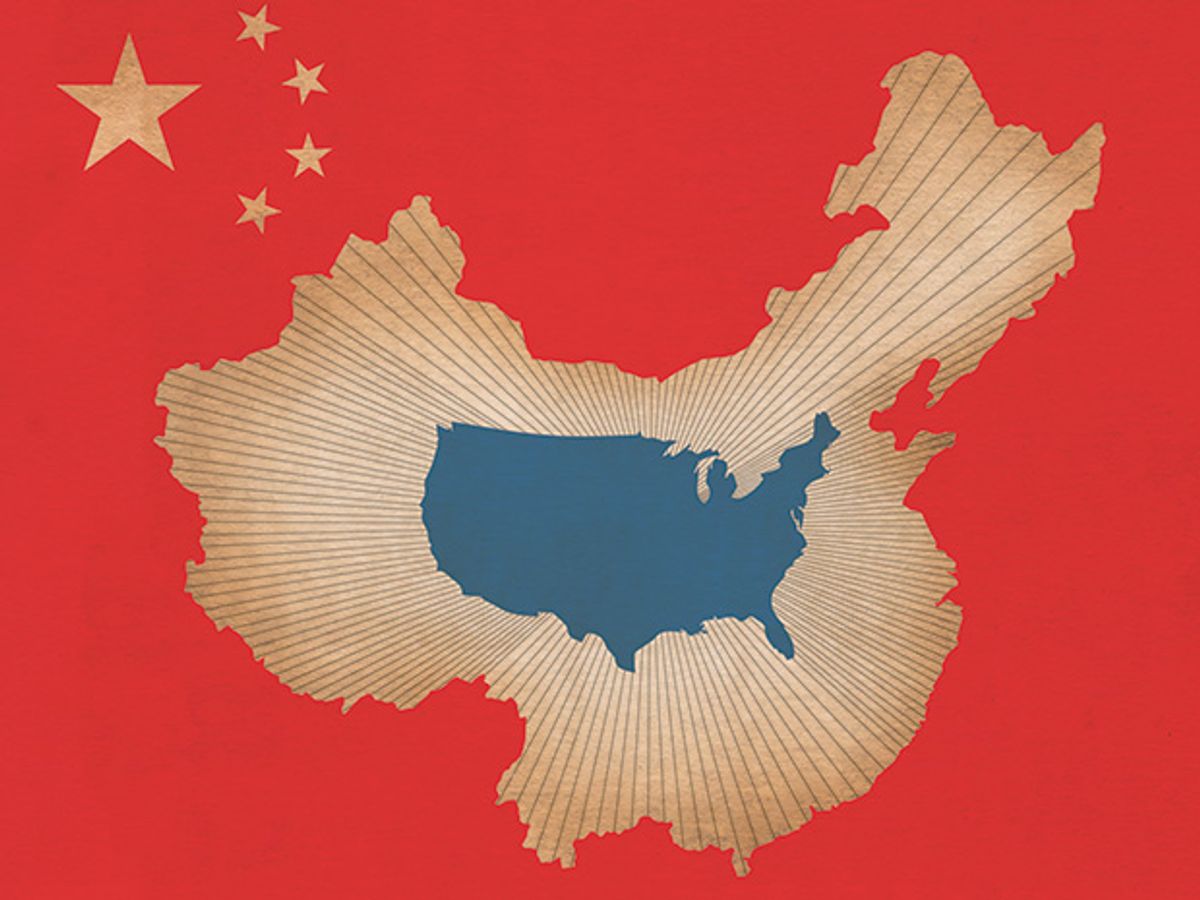Some milestones are anticipated for years. How many articles have been written on how China will surpass the United States to become the world’s largest economy by—take your pick—2015, 2020, or 2025? The timing depends on what monies we use. It’s already happened in terms of purchasing-power parity, which compares the economic product of different countries by eliminating distortions caused by fluctuations in the exchange rates of their national currencies. In 2013, China’s PPP-adjusted GDP was less than 1 percent behind the U.S. total, according to the World Bank. In 2014, China pulled about 4 percent ahead.
If you rely instead on the yuan-to-U.S.-dollar exchange rate, the United States is still well ahead, about 65 percent higher in 2015 (US $17.9 trillion versus $10.9 trillion). But even with the recent slowdown in Chinese GDP growth—from double digits to an official rate of about 7 percent a year and, in reality, less than that—it is still considerably higher than growth in the United States. It is thus only a matter of time before China becomes No. 1, even in nominal terms.
The path to No. 1 status began in 1978, when the country embraced economic modernization, leaving behind three decades of gross mismanagement. For decades China has been the world’s largest producer of grain, coal, and cement, and for years the leading exporter of manufactured goods in general and consumer electronics in particular. There’s nothing surprising about this: China’s population is the world’s largest (1.4 billion in 2016), and its new, modernized economy requires commensurately large outputs.
But in relative terms, China is hardly rich: The World Bank’s generously calculated purchasing-power parity puts the country’s per capita GDP at $14,239 in 2015, or 79th in the global ranking, behind Iraq and Algeria and just ahead of the Dominican Republic, Libya, and Lebanon—hardly a stunning placement. Everyone knows of the rich Chinese who buy real estate in Vancouver and London and diamond-encrusted watches at Galeries Lafayette in Paris, but they constitute a tiny minority.
The GDP and the number of nouveaux riches are misleading measures of the actual quality of life in China. The environment has kept on deteriorating. Air pollution in China’s cities is incredibly bad: According to the World Health Organization, the maximum acceptable level of particulates with diameters under 2.5 nanometers is 25 micrograms per cubic meter of air, but many Chinese cities have repeatedly exceeded 500 μg/m3. Some cities even saw maximums above 1,000 μg/m3. In 2015, Beijing averaged 80 μg/m3, compared with less than 10 for New York City.
Water pollution is also endemic. Nearly half of those living in rural areas lack modern sanitation. The country has less arable land per capita than India, and unlike the much smaller Japan, it could never rely largely on imports. China’s oil and natural gas resources are inferior to the U.S. endowment, with crude oil imports now accounting for more than 60 percent of total consumption compared with less than 40 percent in the United States. And it is better not to think about a Fukushima-like disaster in a country where so many new nuclear reactors have quickly been built in densely populated coastal provinces.
Finally, the country’s population is aging rather rapidly—that’s why the Communist Party abandoned its one-child-per-couple policy in 2015—and as a result, its demographic advantage is already receding. The ratio of economically active to economically dependent people peaked in 2010, and as the ratio declines, so will China’s industrial dynamism.
We’ve seen it all before. Compare the Japan of 1990, whose rise appeared to challenge the entire Western world, with the Japan of 2016, after 25 years of economic stagnation. This is perhaps the best insight into the contrast between the China of 2016 and that of 2040.
